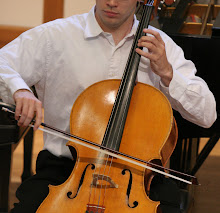The thesis proposal made mention of the central roles of prediction and analogy in intelligence but did not explain their significance, and it introduced "representations" and "internalized concepts" without defining the terms at all. This is the first post in a short series (designated Intelligence I, II, etc. in the sidebar's "Table of Contents") which will provide a conceptual overview of these basic elements of intelligence for the general audience, thus providing a fitting prelude to the full exposition of the emotional core of the thesis.
__________________________________________
The obvious place to start a discussion of intelligence is with a definition. Broadly speaking, by intelligence I mean the general capacity to recognize new patterns in the torrent of sensory input and then to further organize those informational patterns into useful mental representations, like "food" or "dangerous animal" or "chair" or "trigonometric function." I do not mean consciousness, attention, or even awareness, although these things are all closely related topics, and I certainly do not mean particular levels of education, capability, wisdom, or experience.
So far as I can tell, this definition puts me on well-traveled theoretical ground; although the exact procedural architecture of intelligence is not yet certain, the fundamental idea that intelligence must involve pattern-recognition seems to be generally agreed upon by most cognitive scientists.
These informational patterns that we perceive, such as "chair" or "Beethoven's 9th Symphony," are recognized using the various modalities of sensory input (sight, smell, hearing, etc.), but it's worth pointing out that by the time those inputs have reached the brain they have already been converted into neuroelectrical impulses, conveying pure information. In this sense, to the brain (or at least the portions of it associated with the operation of intelligence) all patterns are equally abstract. The principal difference between neurological representations of concrete objects like chairs and abstract concepts like trigonometry lies in the directness of the methods available for testing and refining their conceptual details, not in the manner of their construction. This is especially important to remember when comparing richly complex representations of highly abstract concepts such as "self-identity," which can be spread widely through space and time, to the actual limits of the physical body.
Another point about the "information" paradigm that is worth making is that because the essence of information can be codified and defined in the purely abstract world of mathematics, it's adoption (if correct) theoretically allows us to mimic the brain's neurologically-based computational prowess in another substrate, like a computer, if we can just figure out the right processing architecture. While the extraordinary complexity of the human brain makes this is a horrendously difficult and somewhat controversial proposition, the informational approach has yielded some computational insight into what might be going on and continues to be an exciting focus of research.
The final preliminary piece to consider is that the highly organized complexity of each of the representative examples given above stems from the brain's ability to layer concepts, assembling more sophisticated representations out of older, simpler ones. This is nicely illustrated by the way in which a small number of written letters (once learned) are assembled into syllables and then words, which can be further assembled into sentences and then compositions. The higher the number of levels, the richer the capacity for meaning. At the other end of the spectrum, well below the level of consciousness, are individual neuronal inputs whose firing might correspond to the presence or absence of a vertical edge in a certain part of the field of vision. Much more will be said about this hierarchical layering in due course.
So to sum up, the representations with which we understand the world around us are abstractly neurological in nature, although they are assembled from the input of our senses, and their layered structure is the source of their sophistication. This is just enough background to introduce one of the more surprising functions of successful representations--their capacity to predict future events--which is the subject of the next post.
Further Reading:
( listed in rough ascending order of technical detail)
Jeff Hawkins/Sandra Blakeslee "On Intelligence"
Patricia Smith Churchland "Brain-Wise: Studies in Neurophilosophy"
Christof Koch "The Quest for Consciousness: A Neurobiological Approach"
These and other works can be found on my References/Further Reading post.
Subscribe to:
Post Comments (Atom)

No comments:
Post a Comment